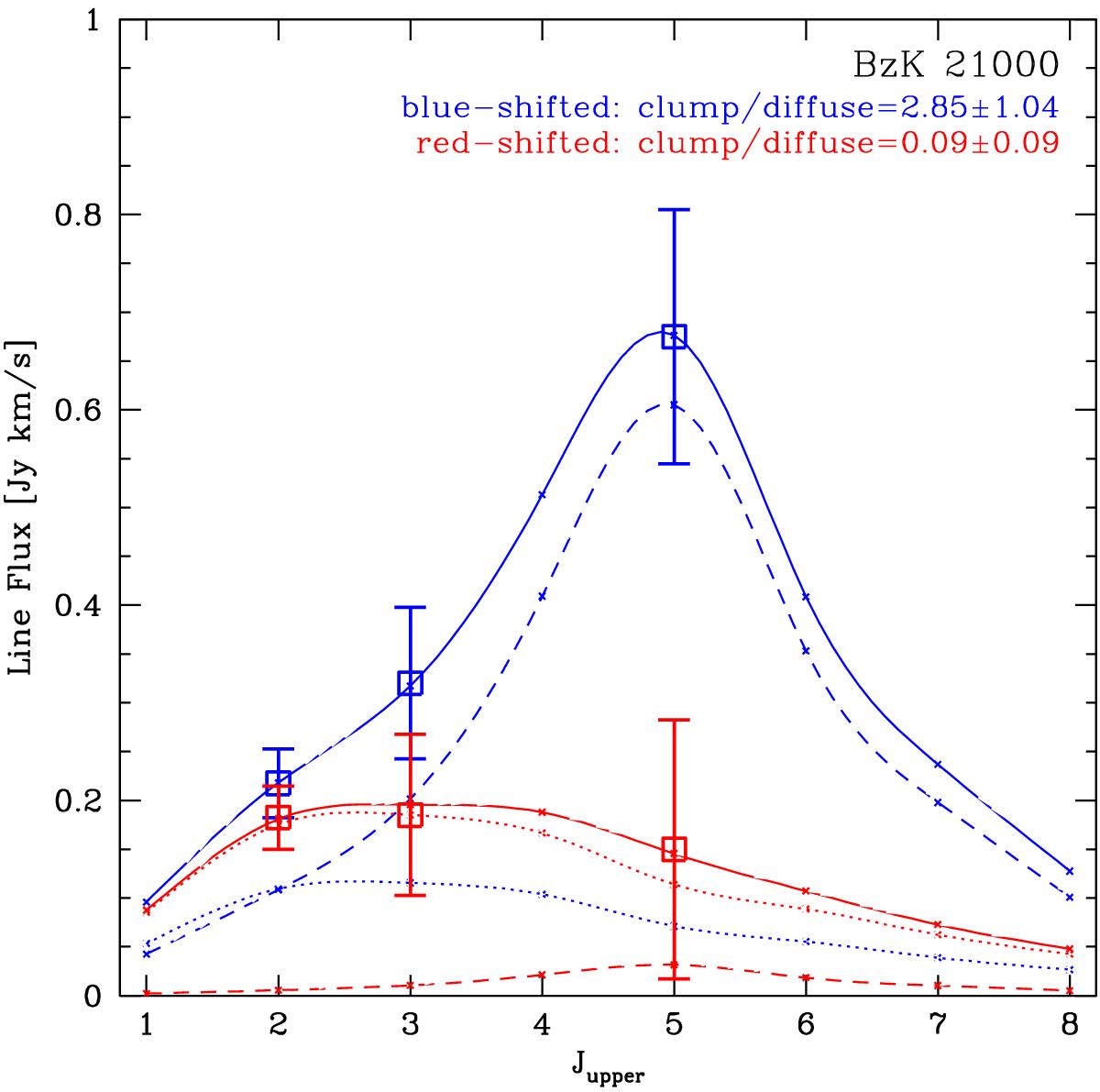Fig. 14

CO SLED for BzK-21000 shown separately for its blue- and redshifted components (using blue and red points) and decomposed using the clumpy (dashed lines) and diffuse (dotted lines) CO SLEDs from B15 (solid lines are for total SLEDs). The blueshifted component, corresponding to the northern half of the galaxy where most massive clumps are located, is more highly excited, requiring only a modest contribution from the diffuse gas. The redshifted component can only be fitted with diffuse gas. Given the optical and near-IR morphology of BzK-21000, this is consistent with the predictions of the simulations reported by B15.
Current usage metrics show cumulative count of Article Views (full-text article views including HTML views, PDF and ePub downloads, according to the available data) and Abstracts Views on Vision4Press platform.
Data correspond to usage on the plateform after 2015. The current usage metrics is available 48-96 hours after online publication and is updated daily on week days.
Initial download of the metrics may take a while.


